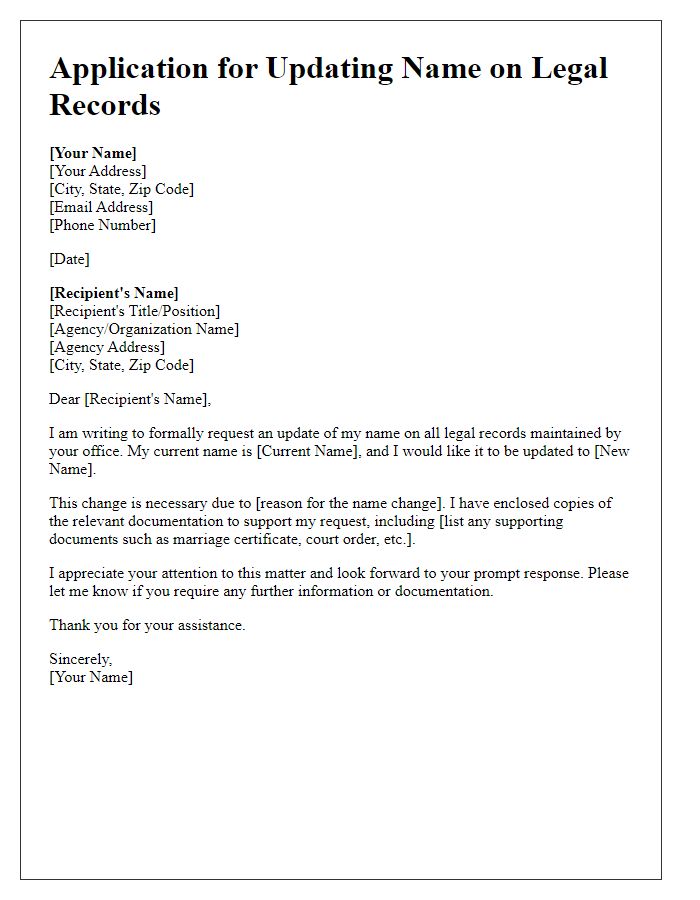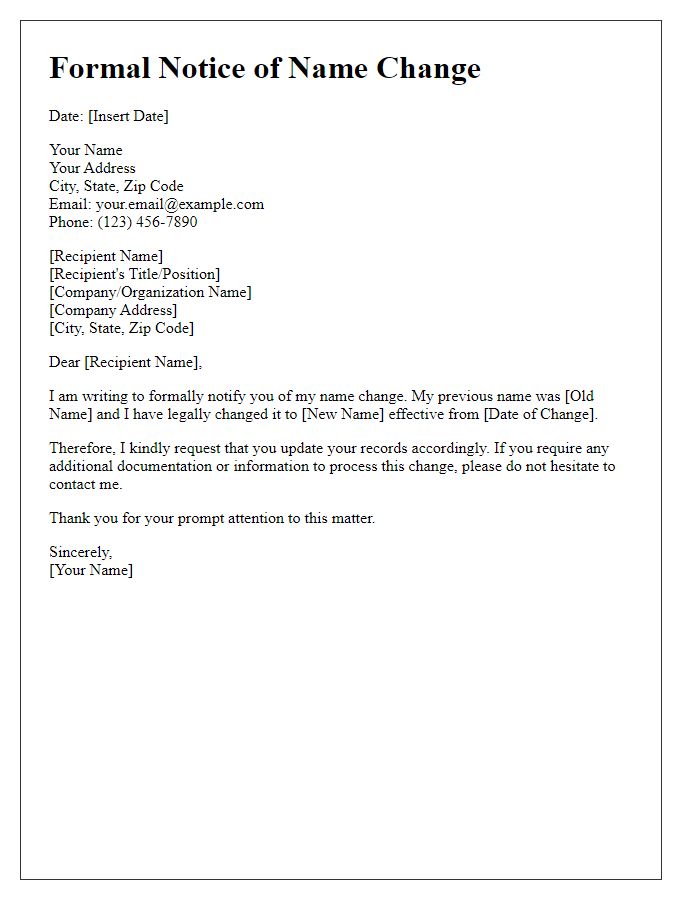Are you considering a legal name change and unsure where to start? Crafting a formal letter can seem daunting, but it's a crucial step in ensuring that all your official records reflect your new name. In this guide, we'll walk you through a simple yet effective template that you can use to submit your request for a name change in public records. Keep reading to find out how to make this process as smooth as possible!

Full current name and contact information
A legal name change request involves updating personal identification documents and official records. For instance, individuals may seek to change their name following significant life events such as marriage, divorce, or gender transition. This request usually requires the individual's full current name (including middle name) to ensure the original records can be accurately referenced. Contact information, which includes a valid phone number, email address, and physical address, is essential for communication concerning the request. Legal documentation, such as a court order or marriage certificate, may be needed to substantiate the name change. These procedures often vary by jurisdiction and can be filed at local government offices, such as the Department of Vital Records, ensuring compliance with state laws.
Detailed reason for name change
A legal name change can stem from various personal circumstances, including marriage, divorce, or gender transition. A marriage certificate may require a name change to reflect the new married name, while divorce decrees often prompt individuals to revert to their maiden name. Gender transitions may necessitate a name change to align one's identity legally with their gender identity, as supported by medical or legal documentation. In instances involving cultural or religious reasons, an individual might seek a name change to honor familial heritage or religious beliefs. Each of these scenarios is typically supported by necessary legal documents, ensuring the name change is properly recognized in official records, such as court orders or identification documents.
Legal documentation supporting the name change
A legal name change request requires precise documentation to ensure acknowledgment and updates in records. The request should include a certified copy of the court order, specifying the name change, which is crucial for validity. Additional supporting documents include identification proof, such as a government-issued ID (passport, driver's license), and potentially a birth certificate, validating the original name. Jurisdictional forms from local courts may also be necessary, varying by state or county. These documents collectively serve as formal evidence, facilitating the transition in official records, essential for future legal, financial, and personal interactions.
Specific records to be updated
A legal name change request requires precise documentation and clarity regarding the specific records needing updates. This includes government-issued identification, such as a driver's license or passport, alongside essential legal documents like a marriage certificate or court order validating the name change. Additionally, records that may necessitate updates include social security information, tax documents, bank accounts, and employment records. Each record must reflect the new legal name accurately to prevent any discrepancies or legal issues in the future, ensuring uniformity across all personal and legal documentation.
Request for confirmation of record update completion
The legal name change request, particularly under local jurisdiction regulations, involves procedures that may vary by state or country. Essential components include personal details (such as first, middle, and last names), the prior name, the new name, and the court's order that legally sanctioned the change. In many regions, this can follow a structured format, including the recipient's department (like Vital Records or the Office of the Clerk), and reference to relevant case numbers. The request must emphasize the importance of updating records in systems (like identification documents, social security records, and educational certifications) to ensure consistency across legal and official platforms. After submission of the request, confirmation of update completion is critical for the individual to proceed with documentation changes seamlessly.
















Comments